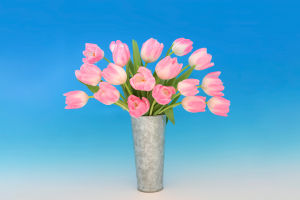Lily of the valley (Convallaria majalis) is a delicate, fragrant flower that has captivated hearts for centuries.
Known for its beautiful, bell-shaped blooms and sweet scent, this perennial plant is not only admired for its aesthetic appeal but also holds a significant place in traditional medicine and various cultural contexts.
Let's explore the medicinal uses, cultural significance, and garden charm of the lily of the valley, revealing why this flower is truly special.
Medicinal Uses
Lily of the valley has a long history of use in traditional medicine. The plant contains compounds known as cardiac glycosides, which can strengthen heart contractions and regulate heart rhythm. Historically, extracts from the lily of the valley have been used to treat heart conditions, including congestive heart failure. Its use dates back to the 18th century when physicians recognized its potential benefits for patients with heart ailments.
In addition to heart health, the lily of the valley has been associated with various other medicinal properties. It has been used as a diuretic, promoting urine flow to help reduce water retention. Some herbalists have also employed it to alleviate symptoms of anxiety and depression, attributing calming effects to its compounds. However, it’s crucial to note that all parts of the plant are toxic if ingested in large quantities. This toxicity underscores the importance of caution and expertise when using lily of the valley for medicinal purposes.
While modern medicine has largely moved away from using lily of the valley due to the availability of safer, more effective treatments, its historical role in herbal medicine remains noteworthy. Researchers continue to study its components, hoping to uncover new insights into its potential therapeutic applications.
Cultural Significance
Lily of the Valley has also woven itself into the fabric of cultural traditions and symbolism. In many cultures, it represents purity, humility, and the return of happiness. This symbolism is particularly evident in European folklore, where the flower is often associated with celebrations. In France, it is customary to gift lily of the valley as a token of good luck and to celebrate the arrival of spring. This tradition reflects the flower’s status as a symbol of renewal and joy.
Moreover, the lily of the valley has found its place in literature and art. Its presence in poems, paintings, and songs often evokes feelings of nostalgia and innocence. The flower has appeared in the works of famous authors such as Robert Louis Stevenson and William Shakespeare, who appreciated its beauty and evocative symbolism.
In addition to its literary and cultural significance, the flower has also been adopted in various ceremonies and events. For instance, it is a popular choice for celebrations such as weddings, where its delicate appearance and sweet fragrance enhance the joyous atmosphere. In this way, the lily of the valley continues to play a role in significant life events, linking the past to the present.
Garden Charm
In the realm of gardening, the lily of the valley holds a special place as a beloved perennial. Its charming, nodding flowers bloom in spring, adding a touch of elegance to gardens and landscapes. The plant thrives in shady areas, making it an excellent choice for woodland gardens or as ground cover in shaded spots. Its ability to spread and form dense mats makes it a practical solution for controlling slope erosion.
Gardeners appreciate the lily of the valley not only for its beauty but also for its low maintenance requirements. Once established, the plant is resilient and can thrive with minimal care. Its fragrance is a bonus, attracting pollinators like bees and butterflies, which enhances the overall biodiversity of the garden.
However, gardeners should be mindful of its invasive tendencies. Lily of the valley can spread rapidly if not properly contained, so planting it in designated areas or using barriers can help manage its growth. With proper care, this flower can provide a stunning display year after year, contributing to the garden’s charm and allure.
Lily of the valley is a flower that embodies beauty, history, and cultural richness. Its medicinal uses, although overshadowed by modern alternatives, highlight its historical significance in traditional medicine. Culturally, it symbolizes purity and renewal, finding a place in celebrations and artistic expressions. In gardens, its elegant blooms and delightful fragrance continue to enchant both gardeners and visitors alike. The enduring charm of the lily of the valley makes it a special flower that transcends time, connecting us to nature, tradition, and the beauty of the changing seasons.


